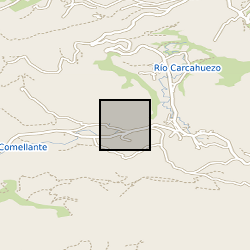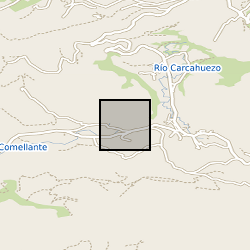Karst
Type of resources
Available actions
Topics
Keywords
Contact for the resource
Provided by
Years
Formats
Representation types
Update frequencies
Scale
-

The following dataset provides climate and cave monitoring data from Cueva de Asiul northern Spain between 2010 and 2014. This data set was initially presented in Smith et al., (2016) Cave monitoring and the potential for palaeoclimate reconstruction from Cueva de Asiul, Cantabria (N. Spain). International Journal of Speleology, 45(1), 1-9. This data set represents the majority of cave monitoring undertaken at this site as part of a NERC funded PhD project (NERC studentship grant NE/I527953/1), data collection either occurred within this single cave site (43°19’0’’N, 3°35’28’’W) or within 1km of the cave in the village of Matienzo. The data set includes high resolution monitoring data for a range of climatic parameters including, cave and external temperature, rainfall direction, amount and oxygen isotope value, soil and cave air pCO2 concentration and carbon isotope value, cave drip rates and oxygen and deuterium isotope values. All data was collected using standard automated logging systems and the data/ samples were analysed either at Lancaster University, UK or at the NERC isotope geosciences laboratory, British Geological Survey, UK. Any missing data is a result of automated logger malfunction and is explained in full in the above cited paper. In combination this data offers a very high resolution, multiyear veiw into hydrological and cave ventilation processes, each of which play a major role in controlling speleothem growth and chemical makeup in Cueva de Asiul. The data set presents the pertinent background monitoring for the accurate interpretation of speleothems from this cave site. Those who may be interested in the data set include cave scientists who wish to implement a monitoring station/understand how climatic parameters influence speleothem development, or those who wish to obtain focused climate data from the Matienzo region between 2010 and 2014. The data set was collected by members of Lancaster University and the Matienzo caving expedition as part of NERC studentship grant NE/I527953/1. All cave monitoring was undertaken with kind permission from Gobierno de Cantabria, Cultura.
-

The data set provides climate and cave monitoring data from Cueva de Asiul, Cantabria, northern Spain. This data was initially presented in graphical form in Smith et al., (2015) - Drip water Electrical Conductivity as an indicator of cave ventilation at the event scale. Science of the Total Environment, 532, 517-527. All data was collected from within the cave or within a 1km radius of the cave site (43°19'0"N, 3°35'28"W) using instrumentation set up as part of a PhD project running between January 2010 and January 2014. The data set includes high resolution event based monitoring data for a range of climatic parameters - cave and external temperature, rainfall amount, soil pCO2 cave air pCO2 concentration, cave drip water calcium saturation, drip water electrical conductivity and cave air pressure. This data was analysed at Lancaster University, UK or at the NERC isotope geosciences laboratory, British Geological Survey, UK. Any missing data from this 4 year period is a result of instrument malfunction and is clearly explained within the above cited paper. The electrical conductivity component of the data set offers the first data set of this type form any cave system, using a submerged CTD Diver probe and novel piston flow housing. The rest of the data constitute a part of a larger cave monitoring data set produced during the project using a number of standard automated cave monitoring devices. When combined this data leads us to conclude that cave drip water electrical conductivity is driven primarily by changes in cave air pCO2 at Cueva de Asiul and therefore responds to cave ventilation dynamics, rather than by changes in karst water residence time. Without such extremely high resolution monitoring the impact of cave ventilation on event based changes in drip water electrical conductivity would not have been established for this site. This data set should be of interest to anyone studying similar cave sites, interested in the role of electrical conductivity as a monitoring tool within caves and cave ventilation on speleothem growth dynamics. The data set was collected by members of Lancaster University and the Matienzo caving expedition as part of NERC studentship grant NE/I527953/1. All cave monitoring was undertaken with kind permission from Gobierno de Cantabria, Cultura.
-

This dataset provides an assessment of the potential for dissolution within a geological deposit. Ground dissolution occurs when certain types of rock contain layers of material that may dissolve if they get wet. This can cause underground cavities to develop. These cavities reduce support to the ground above and can lead to a collapse of overlying rocks. Dissolution of soluble rocks produces landforms and features collectively known as 'karst'. Britain has four main types of soluble or 'karstic' rocks; limestone, chalk, gypsum and salt, each with a different character and associated potential hazards. Engineering problems associated with these karstic rocks include subsidence, sinkhole formation, uneven rock-head and reduced rock-mass strength. Sinkhole formation and subsidence has the potential to cause damage to buildings and infrastructure. Complete Great Britain national coverage is available. The storage formats of the data are ESRI Shapefiles and MapInfo but other formats can be supplied. The GeoSure data sets and reports from the British Geological Survey provide information about potential ground movement or subsidence in a helpful and user-friendly format. The reports can help inform planning decisions and indicate causes of subsidence. The methodology is based on 'BGS Geology' (Digital Map) and expert knowledge of the behaviour of the formations so defined.
-

The current database was developed to record Karst Geohazard information acquired as part of its onshore core and commissioned mapping programmes. Information held on the database includes details on stream sinks, sinkholes, natural cavities and associated building damage. The database is being compiled when staff and project funds are available to do the work. The dataset is currently updated on an irregular basis as new karst geohazard information is received from field surveys. Karst geohazard details observed and measured in the field are recorded on a standard proforma or digitally using the BGS•SIGMAmobile tablet computers or in the office via a GSD (Geological Spatial Database) to ensure consistency of information and to allow easy entry into the database. The database currently holds details of karst geohazards in: The limestone areas of the Mendip Hills, Bath, Bristol, Monmouth, Plymouth, Derbyshire Dome,and South Wales (North Crop), North Pennines (Malham to Hawes and Weardale: Rookhope to Cornriggs). The chalk of Southern England (especially in Dorset, and the Salisbury, Winchester, Andover, Basingstoke, Dorchester, Hungerford and Alresford, Worthing, South London (Leatherhead-Croydon-Bromley), Newbury, Maidenhead, Hemel Hempstead, St Albans, Hatfield. Jurassic limestone areas from Grantham to Stamford. Gypsum areas in Yorkshire, Cumbria and Darlington. Salt areas in Cheshire and Stafford (natural and brine extraction-induced sinkholes). The database is eventually intended to hold information on karst geohazards throughout Great Britain and about half of the country is now included.
-

**NO LONGER EXISTS**Data detailing the distribution and severity of dissolution (karst) features throughout the UK. The data is stored locally as ArcView shape files with associated database information detailing the severity of the karst geohazards ranked from 1-5. The dataset is under construction, but will eventually cover the karst geohazards related to Limestone, Chalk, Gypsum and Salt. Consistent data, but some variability depening on the age of the source digital maps.
-

Data detailing the distribution and nature of springs in the UK. Originally constructed to hold data relating to karst geohazards, the database has been extended from the Limestone, Chalk, Gypsum and Salt areas to include all springs. The data is stored locally as ArcView shape and .dbf files (for information gathered through the karst geohazards - ground movements: dissolution project) with the data copied to ORACLE. Data can also be input directly into ORACLE. The database is an important component part of the karst geohazards database.
 NERC Data Catalogue Service
NERC Data Catalogue Service